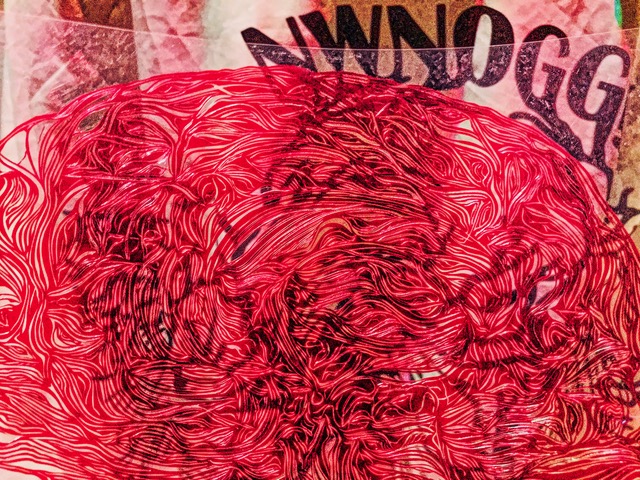And who isn’t? Just look at current events…
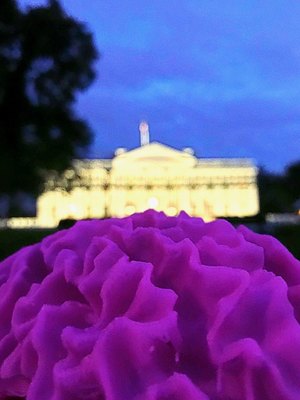
Republicans in Congress (even supposed “moderates”) took a major step this week towards raising taxes on graduate students while showering wealthy individuals and corporations with massive financial windfalls. Sexual assault by those in positions of authority, environmental degradation, oil drilling in the Arctic National Wildlife Refuge, collusion with foreign governments to undermine U.S. elections and white supremacists are on the front page, while an open internet, health care, arts funding and public research and education are under attack…
“What sane person could live in this world and not be crazy?” – Ursula LeGuin

“Dripping rainbows,” by Qu’ran @ p:ear, from Homelessness & the Brain
Plus, it’s finals week! And there are holidays!
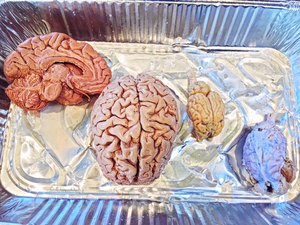
However, not everyone responds to stress in the same way. Some feel excited and, for example, may leap to call their legislators, write letters, organize, and make sure they are registered to vote. In contrast, others may sweat, withdraw, and feel tense, anxious, nervous, panicky and depressed. How do these multiple stressors affect us individually, and how do our genes and diets play a role?
“It’s not stress that kills us, it is our reaction to it.” –Hans Selye
TAKE ACTION: Contact your U.S. Senator and U.S. Representative
TAKE ACTION: Register to vote in Oregon and Washington
LEARN MORE: What Calling Congress Achieves

On a gorgeous Northwest fall evening, plenty of stressed citizens streamed into our favorite bike shop and pub to hear Eileen Torres, a graduate student in Jacob Raber’s lab in Behavioral Neuroscience at OHSU, and Joshua Abraham, a visual artist and printmaker, discuss “The Stressed Brain: The Good, the Bad, and the Fat…”
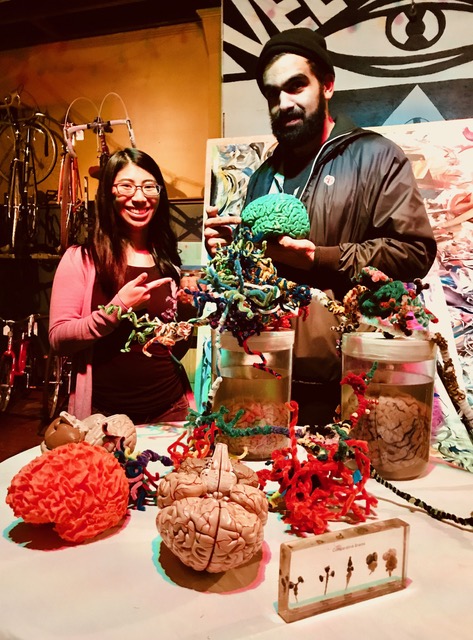
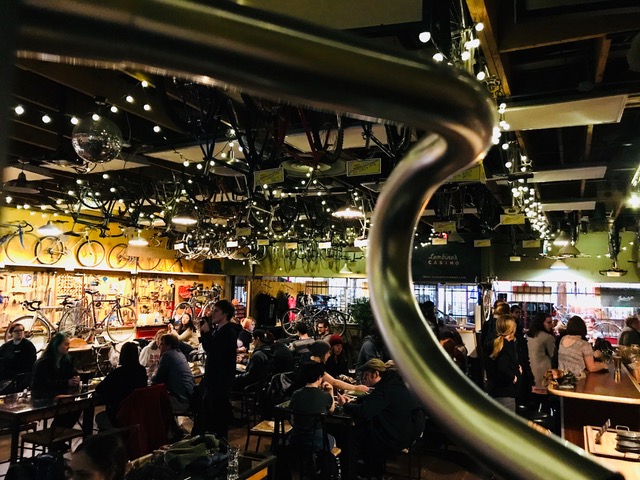
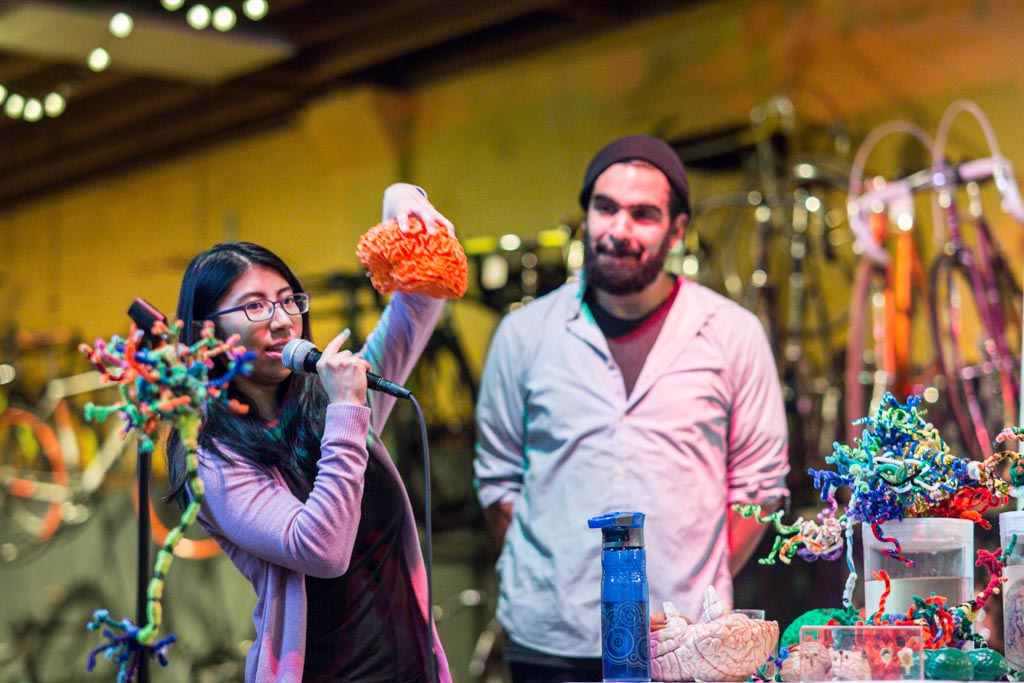
Photo above by Trevor Kubat
Social engagement and connection contribute to resilience, so the opportunity to gather at Velo Cult and discover new work from graduate students and artists – over a beer, no less (or a soda, coffee or tea) – is perhaps partly why these free Noggin experiences draw large and supportive crowds…
LEARN MORE: The psychobiology of depression and resilience to stress
LEARN MORE: Changing Brain Waves of Depression
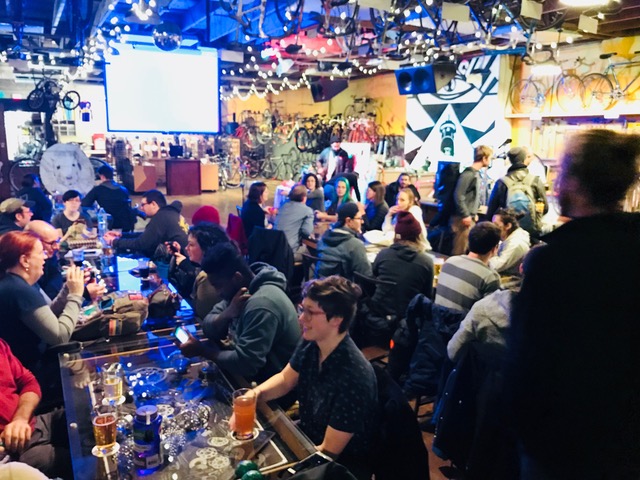
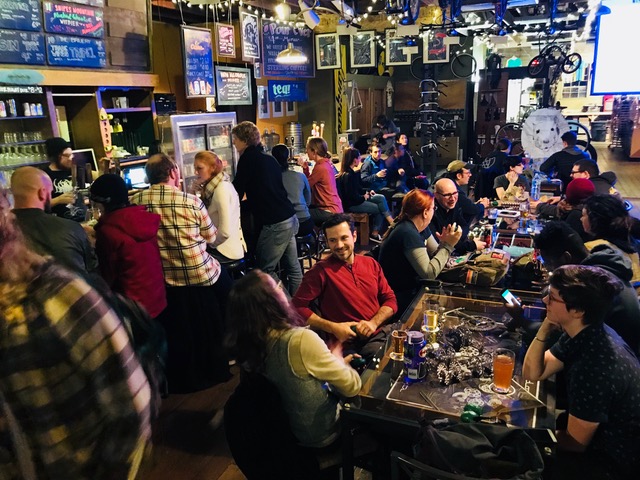
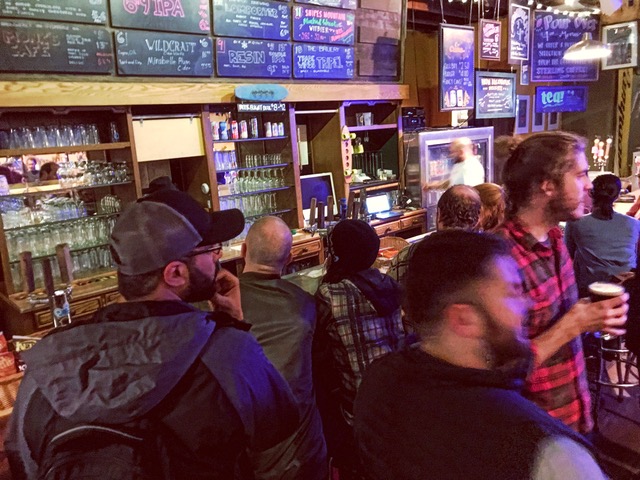
Eileen began with a question: What are we talking about when we talk about stress?

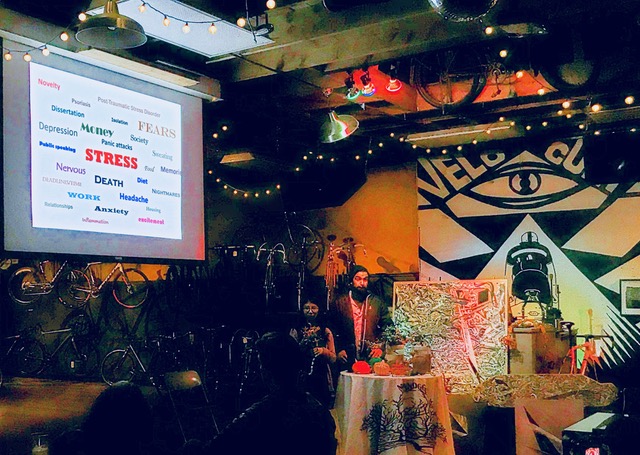
She’d asked several friends and colleagues the same question, and their responses included “money, fears, death, nervous, anxiety, work, deadlines/time, headache, novelty, housing, relationships, sweating, society, isolation, nightmares, inflammation, psoriasis, post traumatic stress disorder and memories…”

Stress is, first and foremost, an emotional response – physical changes in our bodies, including changes in heart rate, blood pressure, circulating hormone levels, facial expressions and posture. However these changes are also mapped in brain regions which support perceptions (or feelings) of emotion – the anxiety, perhaps the terror, or in some cases the excitement and exhilaration of an experience where the body is ready and prepared for action…
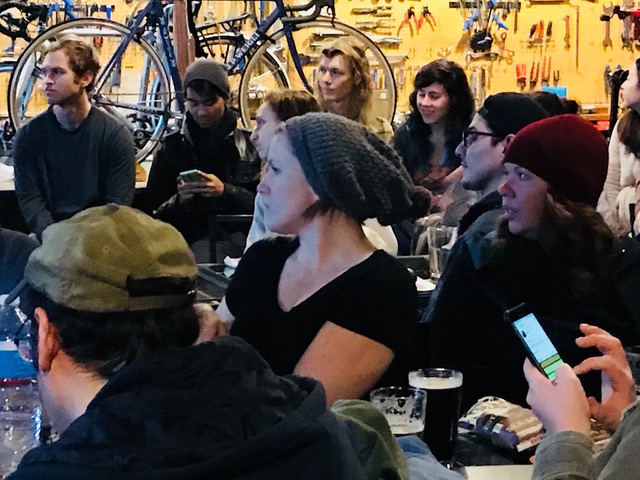
Eileen introduced us to a core biological component of our stress response: the Hypothalamic-Pituitary-Adrenal (or HPA) axis. These three structures, two (the hypothalamus and pituitary gland) found in the brain and one (the adrenal glands) located on top of each kidney, talk with each other through the release of chemicals called hormones, which travel through the blood to reach and influence their targets…

“Stress gets a bad rap,” noted Eileen. HPA activation is critical for survival, and prepares you for handling demanding situations. One brain target of cortisol (CORT), a stress hormone released by the adrenal glands, is the hippocampus, a region essential for memory. Acute (short-lived) stress improves memory – our memories are enhanced by emotionally significant events (remember this week when you vote next year).

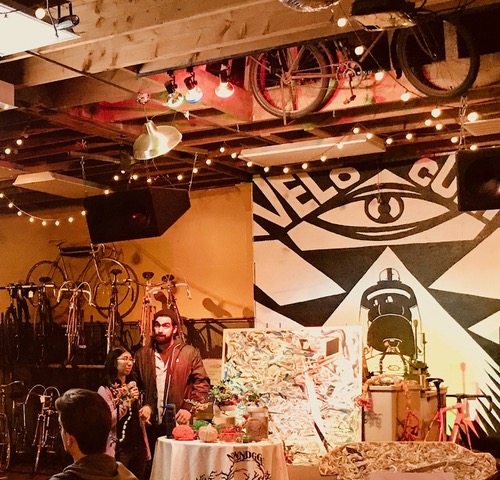

In one study, subjects endured either an acute stressful experience, or a non-stressful control experience before a two hour walk through a zoo. Those who were stressed had better memory, and not only for the stress they’d suffered (thanks to research!) – but also for the animals they’d encountered an hour into their tour…

LEARN MORE: Stress in the zoo: Tracking the impact of stress on memory formation over time
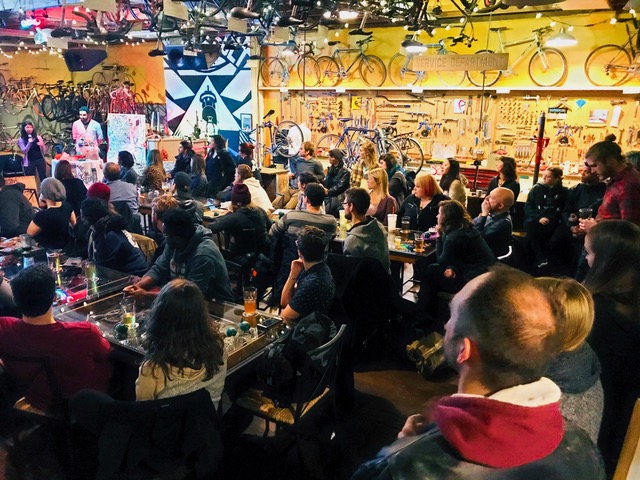
Stress physically changes our brains, and the HPA axis is found in many species as a highly conserved biological network which helps translate limited stressful experiences into neural plasticity. Mild stressors can even lead to neurogenesis – the growth of new neurons in the dentate gyrus (DG) region of the hippocampus!

LEARN MORE: Acute stress enhances adult rat hippocampal neurogenesis
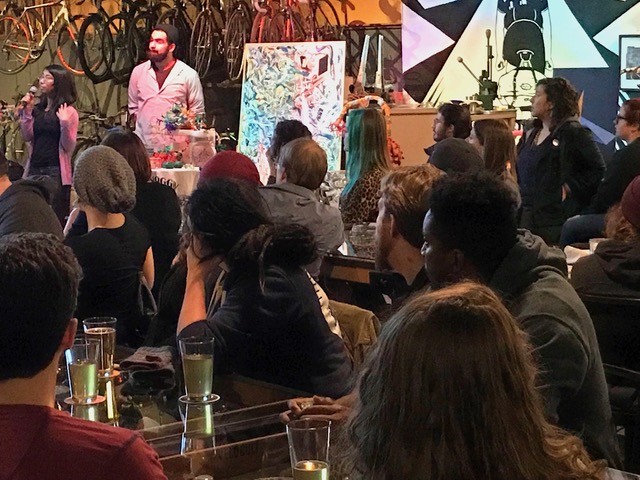
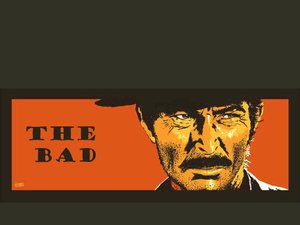
“That’s the problem with living in continual chaos. It’s exhausting, sometimes frightening, like riding a roller coaster blindfolded.” – Lorna Luft
However, too much stress – chronic stress – is detrimental. “Chronic stress actually changes the types of cells formed in the hippocampus,” explained Eileen. She pointed to the yellow myelin sheaths on her microphone’s pipe cleaner neuron, adding “Noggin always has the best props for a brain talk!!”
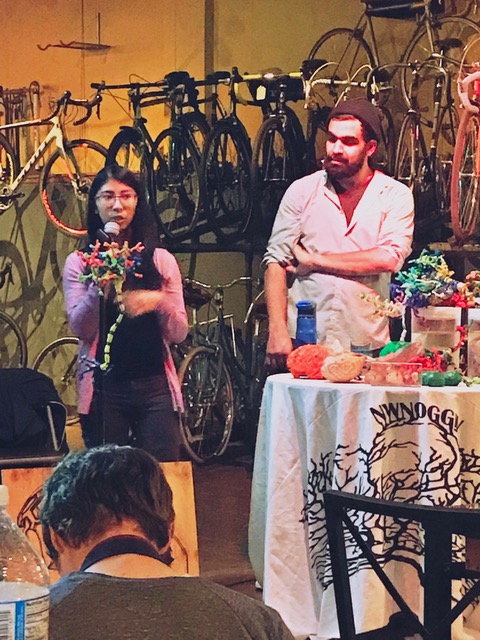

For example, glial cells known as oligodendrocytes (in green, in the image above) – which wrap segments of a neuron’s wire-like axon with portions of their own cellular membranes (the myelin) to insulate and increase the speed of electric transmission – become more abundant after chronic stress…
LEARN MORE: Stress and glucocorticoids promote oligodendrogenesis in the adult hippocampus
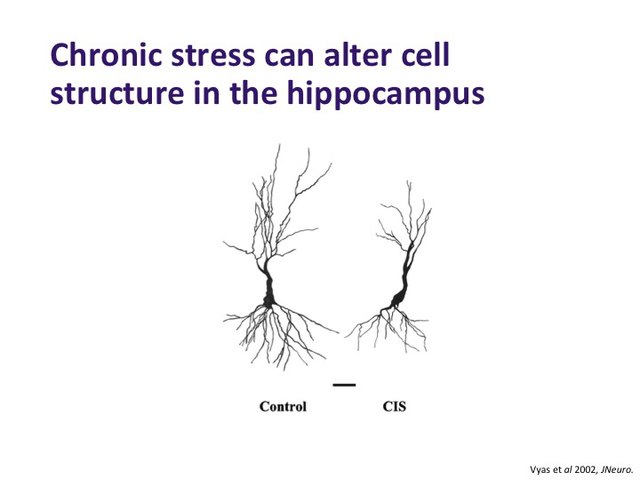
In addition, chronic immobilization stress (CIS) in rats causes their hippocampal neurons to lose dendrites, and thus synapses, contributing to memory impairments. In contrast, neurons in a nucleus known as the amygdala respond to CIS by extensively branching, forming new connections. The amygdala is a major player in our emotional response to threatening external stimuli, increasing sympathetic “fight or flight” reactions, and causing us to freeze or grimace in fear. It also directly activates the HPA axis…
LEARN MORE: Chronic stress induces contrasting patterns of dendritic remodeling in hippocampal and amygdaloid neurons
LEARN MORE: Amygdala, medial prefrontal cortex, and hippocampal function in PTSD
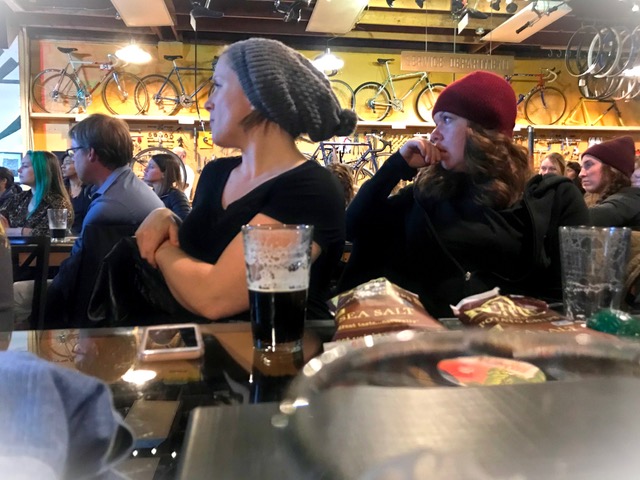
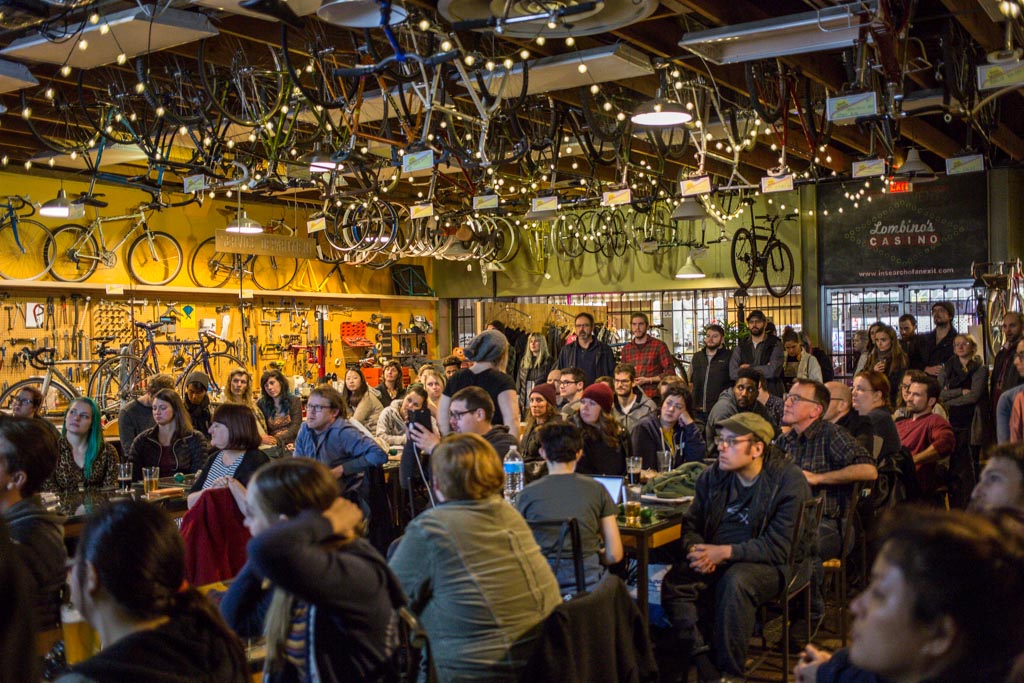
Photo above by Trevor Kubat
Chronic stress also impairs hippocampal neurogenesis, so we get fewer new neurons. It can also kill off neurons, and stress-related neurodegeneration may contribute to certain diseases like Alzheimer’s…
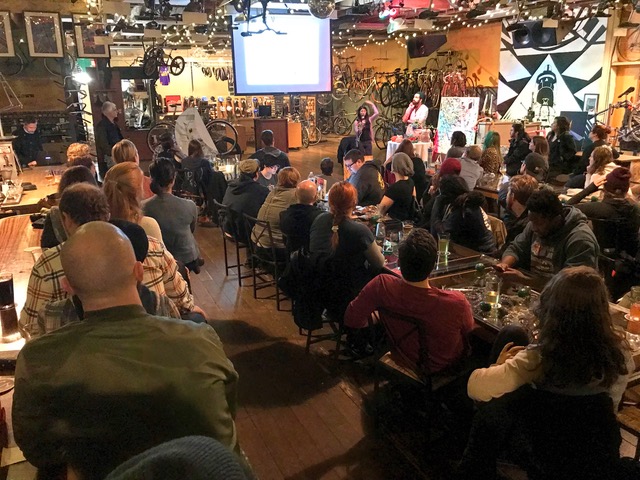
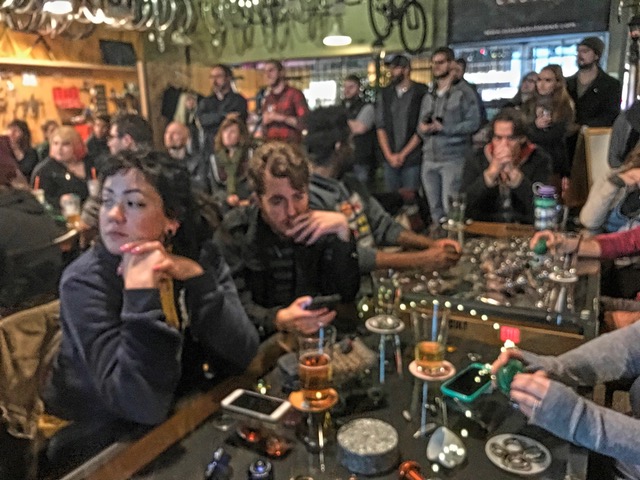
LEARN MORE: Chronic Stress and Glucocorticoids: From Neuronal Plasticity to Neurodegeneration
Joshua was thrilled to collaborate with Eileen, and relate this background on stress and the brain to his own work. While preparing for Velo Cult, he attempted a new print making technique known as rubylith, where the red top layer of a two-layered sheet is painstakingly cut with a knife to create an image. It’s frequently used in screen printing, but was also employed in early efforts to manufacture Intel’s computer chips!
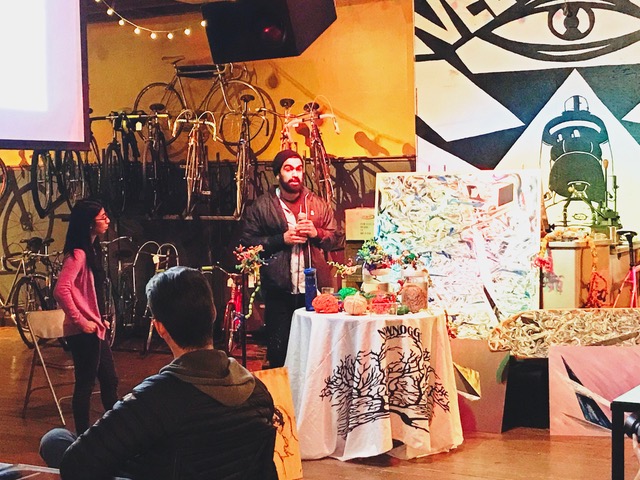

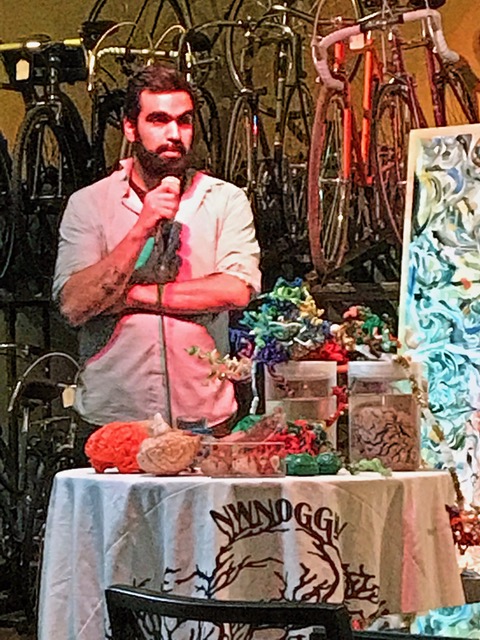
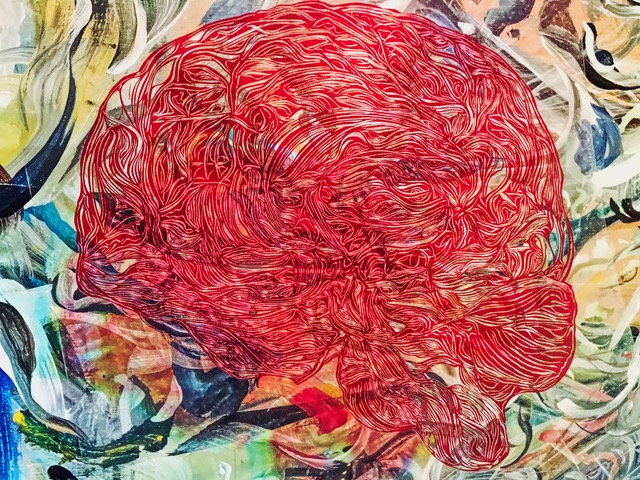
Joshua noted that this was in some ways a stressful experience, as he encountered technical problems with his efforts to print the brain (the emulsion was old, the exposure unit vacuum broke). Yet the intricate line work was motivating, enjoyable, engaging, and a good way to channel the agitation and energy that stress can provide. “I make many representations of imagined landscapes, and build worlds of moments that let me avoid world stress.”

So how does this also relate to…fat?
“Fat is fascinating,” explained Eileen, “and also highly influenced by our genes…” Stress (along with certain genes and diets) increases the risk of cardiovascular disease. In addition, higher cholesterol levels are associated with anxiety and post traumatic stress disorder, while lower levels are linked to depression…
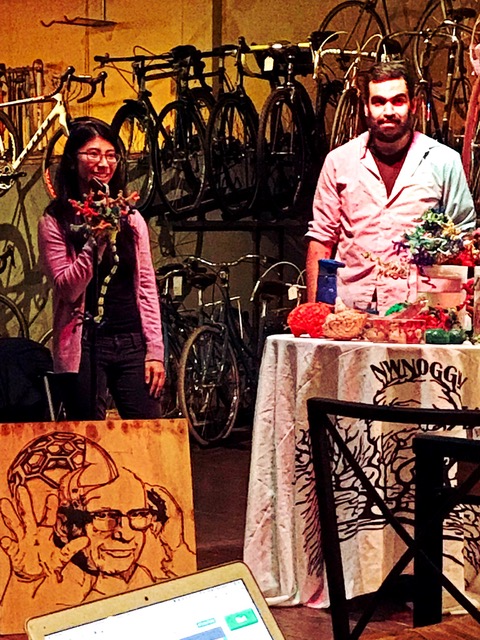
LEARN MORE: Stress and cardiovascular disease
LEARN MORE: Post-traumatic Stress Disorder and Cardiovascular Disease
LEARN MORE: Low cholesterol is associated with depression among US household population

Fats (or lipids) are essential biological molecules, used as an energy source but also the primary structural units of every cellular and intracellular membrane in your body and brain. Fats are also transported from location to location, and this transport is dependent on lipoproteins, chemicals composed of both protein and fat. One essential example is Apolipoprotein E (ApoE), which transports cholesterol…

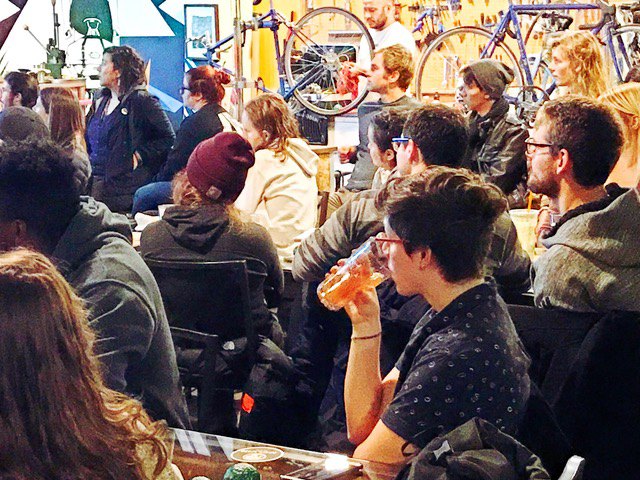
There are three structural forms of ApoE in humans (ApoE2, ApoE3, ApoE4). Each of us has inherited two gene variants (alleles) from our parents, and the ones that we’ve got have implications for our own health and behavior. The E4 allele is associated with an increased risk of both cardiovascular disease and Alzheimer’s. If you have two E4 alleles, your risk is even higher. The E2 gene, in contrast, decreases your risk of Alzheimer’s, but is associated with a greater likelihood of developing PTSD, and increased severity of stress-related symptoms…
LEARN MORE: Apolipoprotein E and Alzheimer disease: risk, mechanisms, and therapy
LEARN MORE: ApoE2 Exaggerates PTSD-Related Behavioral, Cognitive, and Neuroendocrine Alterations
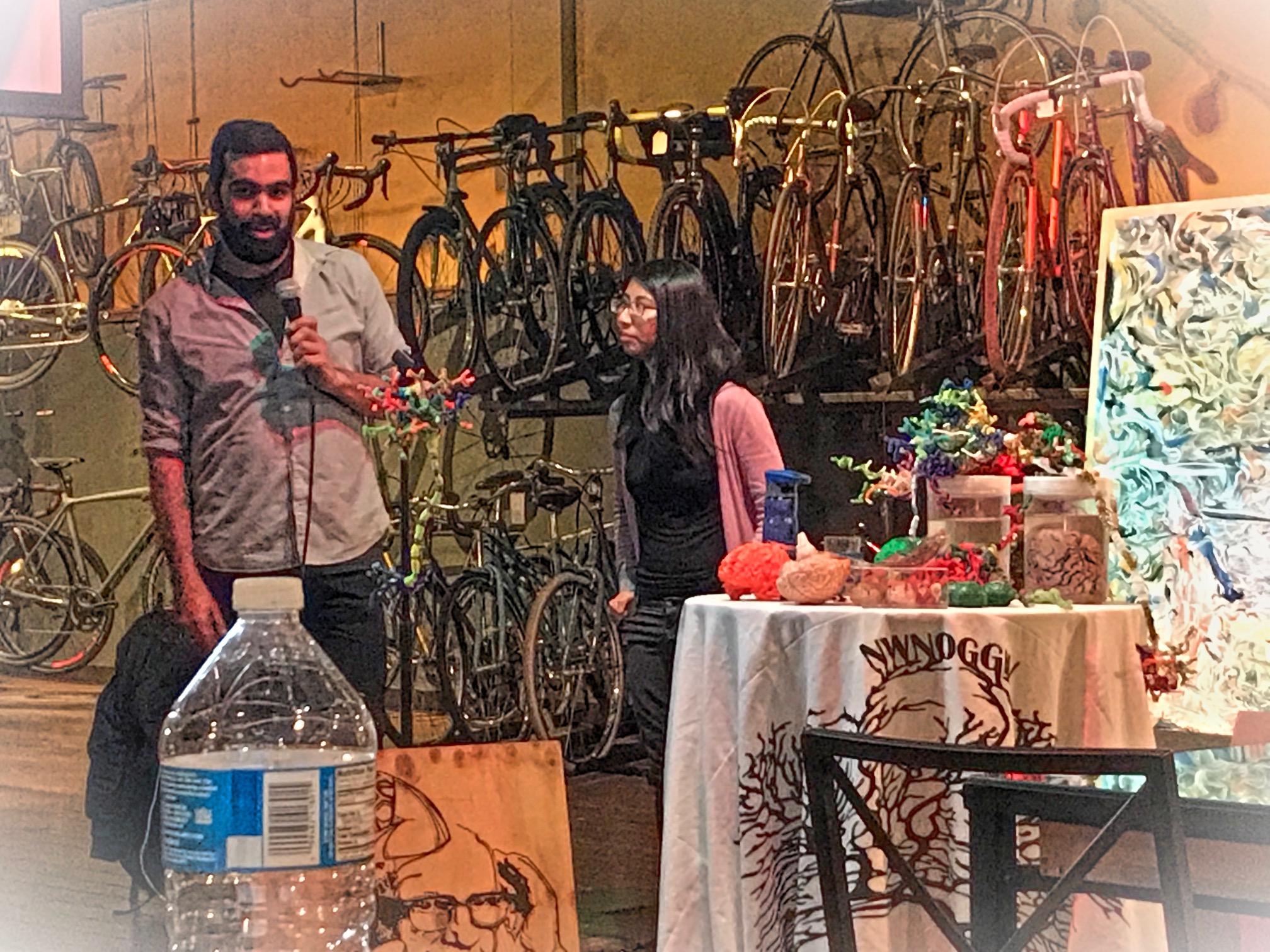
Joshua visited Eileen in the Raber lab at OHSU to learn more about how research on stress, lipids and genes is carried out. He wanted to visually emphasize the importance of fat transport and membranes in his art, and presented his evocative, informative work at Velo Cult…
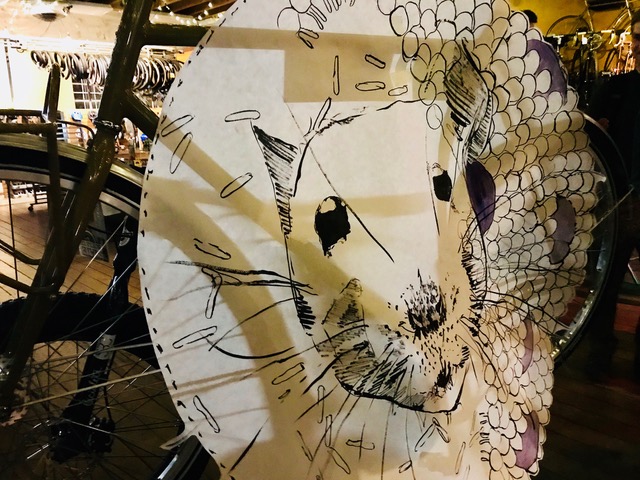
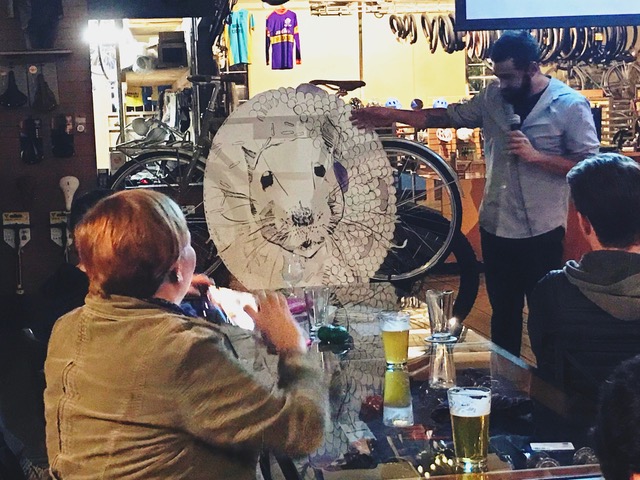
“Life forms that deal with stress – fish, rats, people – we all have these chemicals, and they affect how we respond to what happens in our lives,” said Joshua. “This was a way to make it more understandable to me.”
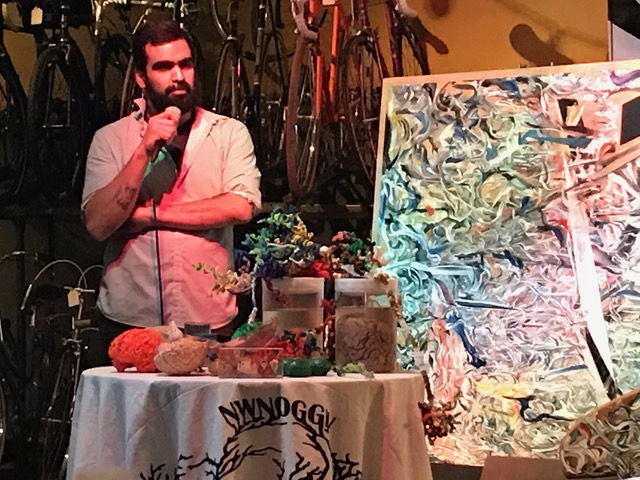
“These are stressful times,” he continued. “I’m from Detroit, poverty bred poverty, raised by a single father, and I’ve struggled with homelessness and stress.” Joshua related a particularly traumatic incident from last summer, when his bike wheel struck a divot on the Springwater Corridor Trail. He hit his head, tore open his face, and blacked out, and was lucky that three nurses jogged by afterwards (he’s not sure how long) and called 911…

Homelessness and access to housing is a tremendous source of stress. “A living space should be a human right,” he argued. Joshua then unveiled another impactful work, the face of a Syrian refugee child, subjected to stresses and trauma that many of us can’t imagine. “Something that cripples you, denies you access to basic freedoms – you don’t feel like a human,” he noted, echoing telling comments made by homeless youth at p:ear…
LEARN MORE: The world must not turn its back on the Syrian refugee crisis
LEARN MORE: Landscapes of the Brain: Seeing us all through research & art
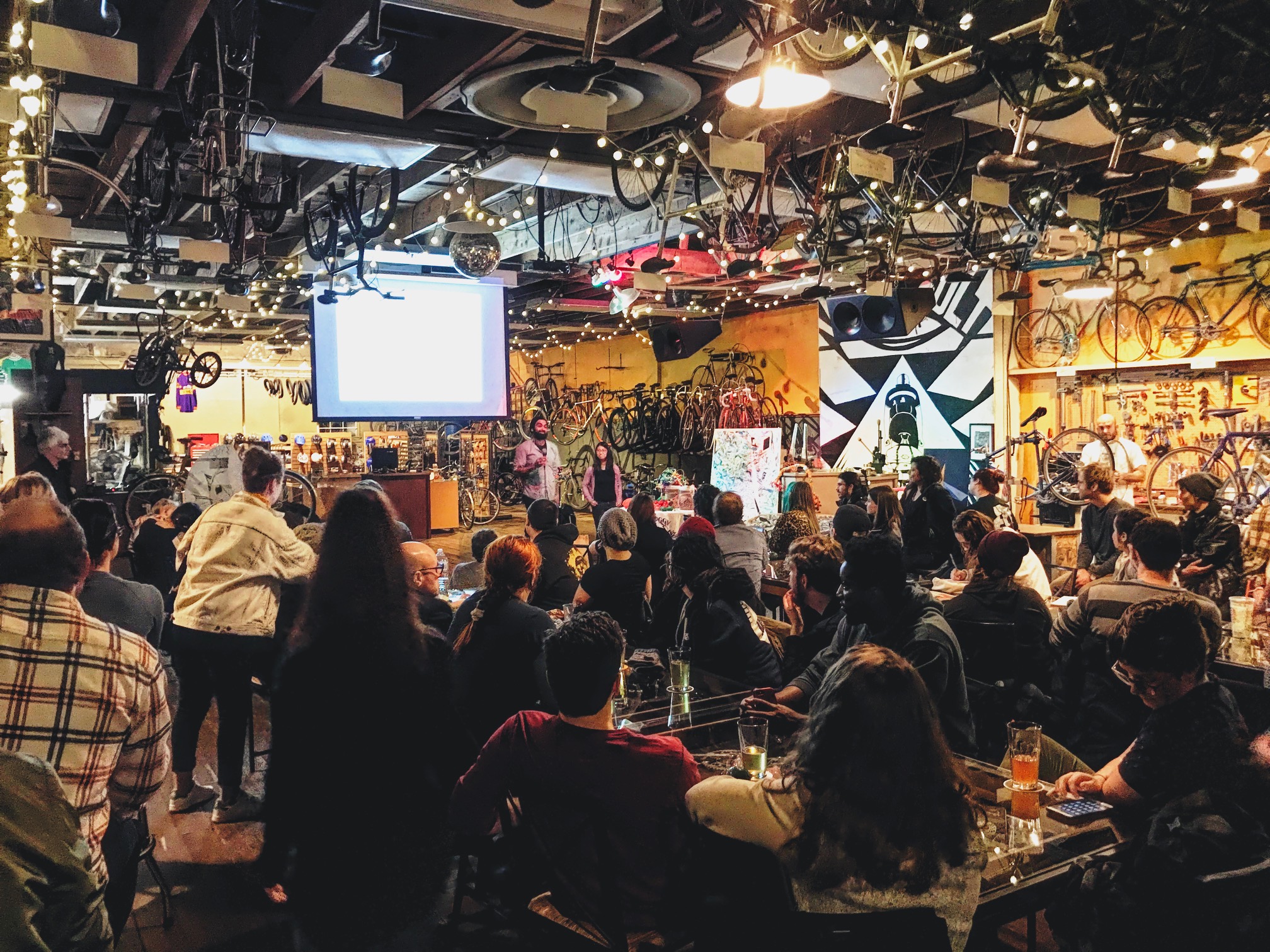
However, making art is one powerful way to effectively, and compellingly, deal with significant stress. “How do you eat an elephant?” asked Joshua. “One bite at a time, of course. And how do you make paintings? One brushstroke at a time.”

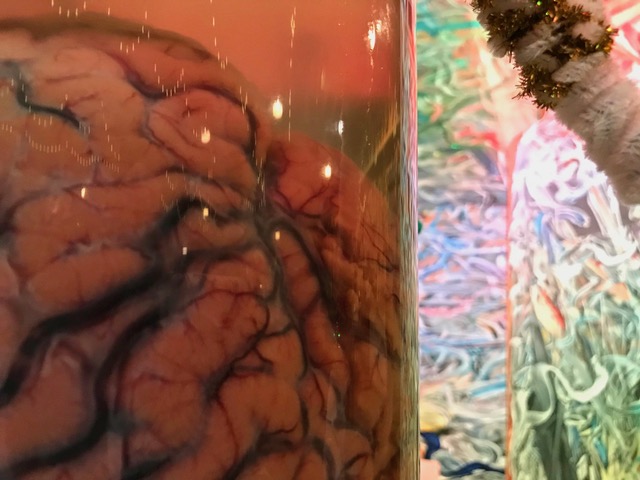
“The route to memory should be a good one,” he added. “Breaking tasks down into smaller chunks, or brushstrokes, really helps this process along.” Joshua made many of us consider the critical importance of art, not only in conveying complex ideas, but in providing essential opportunities for creative expression and the productive channeling of that energy and agitation associated with stressful school environments. Removing art from the curriculum, in public schools, or public universities, is always a bad idea…
“I am certain that after the dust of centuries has passed over our cities, we too, will be remembered not for victories or defeats in battle or in politics, but for our contribution to the human spirit.” -John F. Kennedy
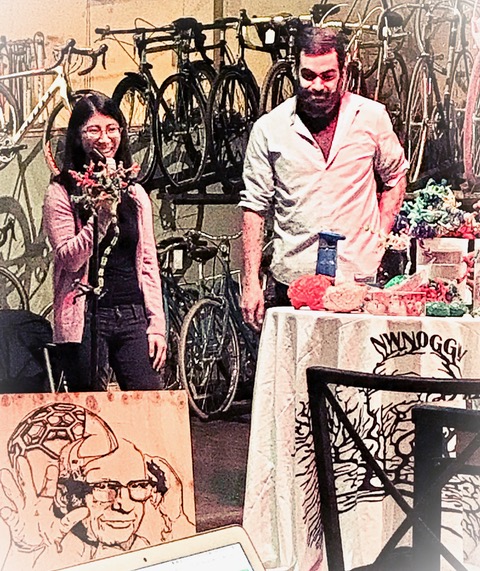
Many audience members had questions, and our excellent presenters took them all. We also enjoyed Joshua’s artwork, and spent time discussing stress, art, fat and the brain…
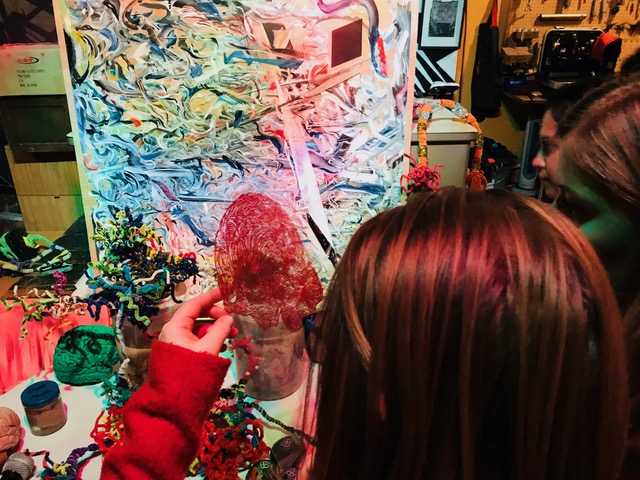
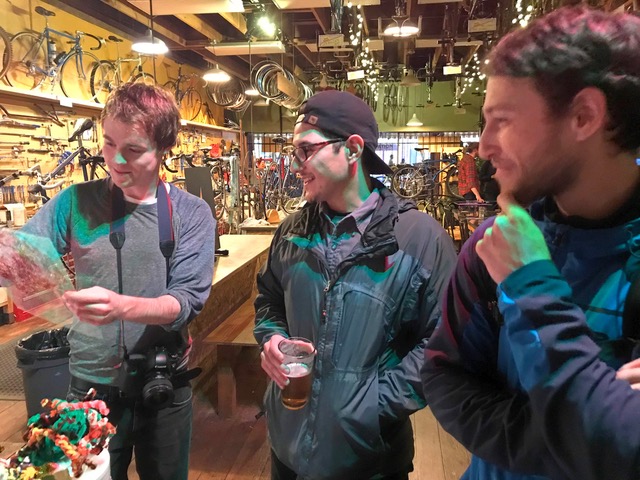
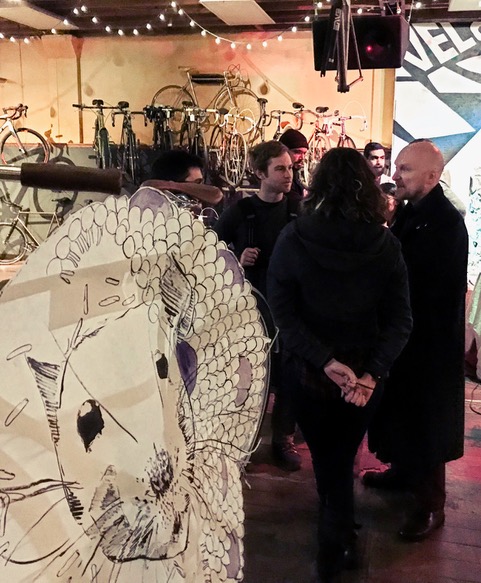
From Eileen Torres…
“As someone who studies the effects of stress on the brain, the pre-talk stress spiral I sent myself into just prior to this Velo Cult talk was undesired to say the least. The best advice I’ve had all year though, was to get uncomfortable, because in that discomfort we are forced to seek why and grow from it. This week, presenting at Velo Cult, provided that discomfort. In that uncomfortable space not only did I practice a skill I feel that many graduate students, and really scientists, need, but I also remembered my fortune to find supportive, curious communities. I had my own mentor and lab mates, faculty and staff, classmates and friends, representing my academic community, support me as I stood in very new territory. This was after all, my very first talk to a lay audience about my research. I was touched by their willingness to see me talk yet again about ApoE and stress. I also had strangers, Portlanders and science enthusiasts, pushing me to think about the relevance of my own work. And artists gave me a new perspective on how science and art really do overlap in a tangible, thoughtful way. In this case, the art was meaningful because I understood the story of where it came from and what it represented to the artist. And as these communities shared a space, there were so many points of intersection seen and heard in conversations.
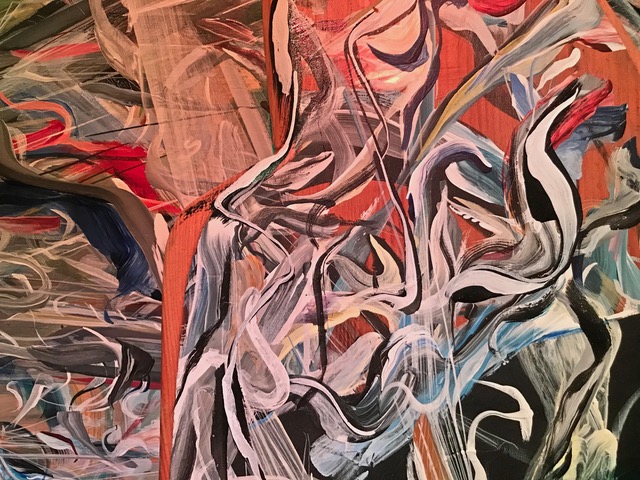
A word about working with Josh. Although he was very recently a stranger to me, I truly, deeply appreciate the time we had to collaborate. He challenged me to realize that the way I talk about science can be inaccessible (even if that’s not clear from my point of view). Josh also showed another way of conveying a message, not one doused in jargon or too-specific terms, but with intricate, elegant visuals, and in the case of the idea of resilience, by his everyday demeanor and actions.
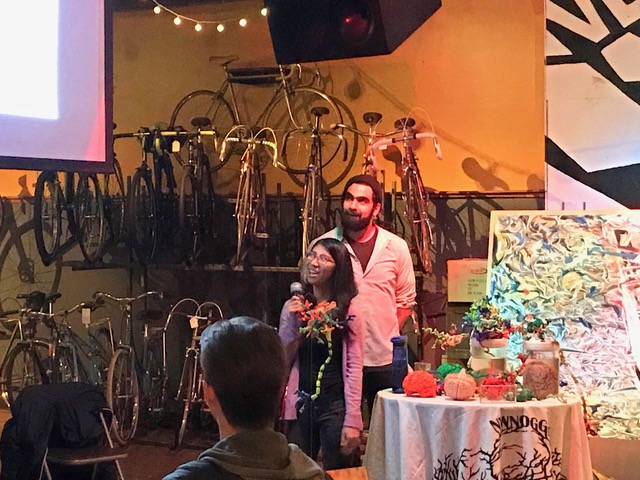
This was a reinvigorating experience as I work towards my degree..!”
